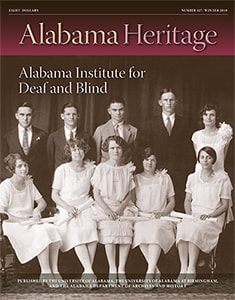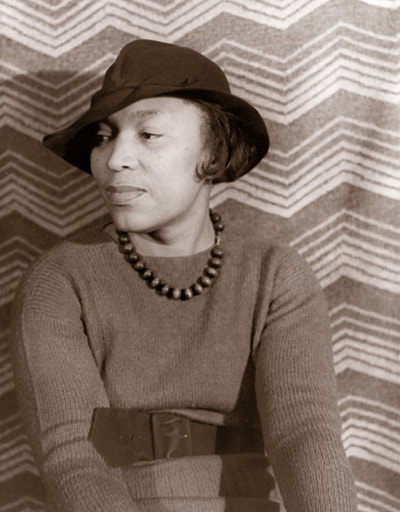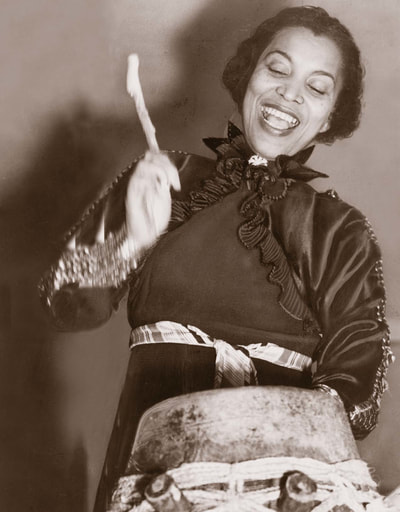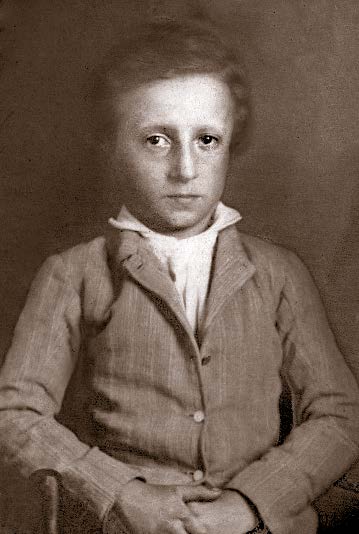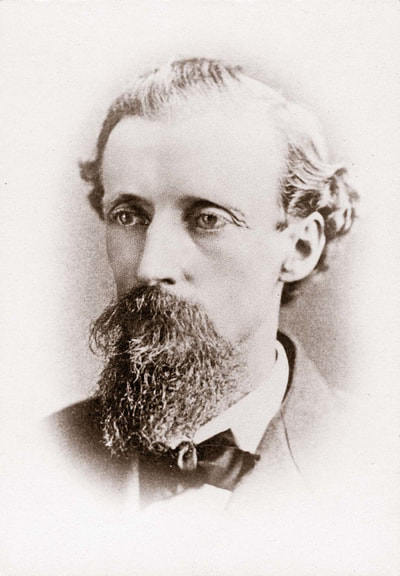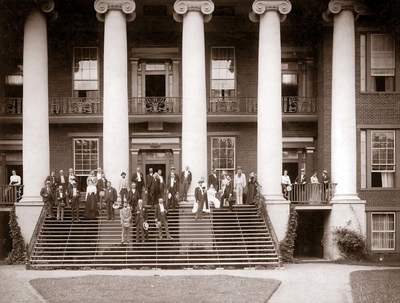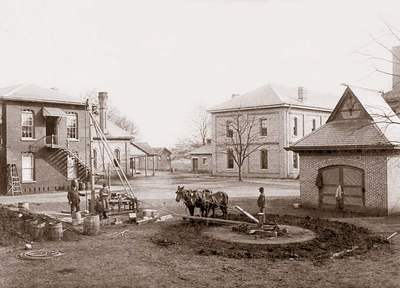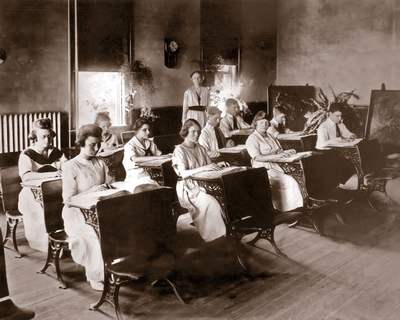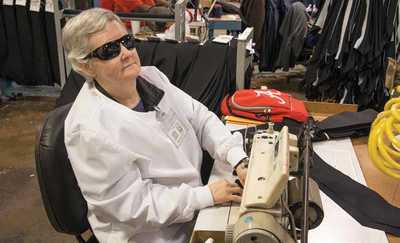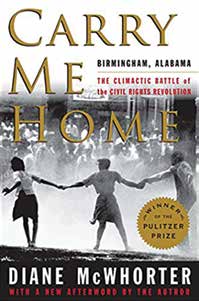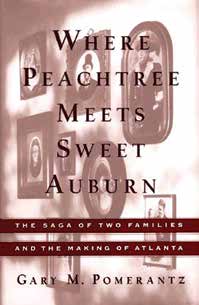|
On the cover: The AIDB class of 1927. (Photo courtesy Alabama Institute for Deaf and Blind, Warren Museum Archives Collection)
|
FEATURE ABSTRACTS
Zora Neale Hurston
Finding Her Own Way
by Wayne Flynt
Born into poverty near the end of the nineteenth century, Zora Neale Hurston attended Barnard College and Columbia University and became a noted writer, anthropologist, and cultural commentator. A force in the Harlem Renaissance, Hurston collaborated with Langston Hughes and sparred with numerous figures whose ideas differed from her own. She wrote many plays, short stories, essays, and novels, but during her life she worked largely in obscurity. She became recognized for her writing after her death, upon her rediscovery by Pulitzer-winning writer Alice Walker.
About the Author
Wayne Flynt’s ancestors arrived in Alabama more than a century and a half ago and decided to stay. He grew up in various towns from Sheffield to Dothan, graduated from Anniston High School and Howard College (now Samford University), took his doctorate at Florida State University, then returned to his alma mater to teach for twelve years. In1977 he became head of the history department at Auburn and retired as Distinguished Professor Emeritus in 2005, after teaching six thousand students during his forty-year career. He has won eighteen teaching awards and written/coauthored many books (two of which were nominated for the Pulitzer Prize). Another book won the Lillian Smith Prize for non-fiction, and two books received the Alabama Library Association prize for non-fiction. Among his awards was induction into the Alabama Academy of Honor and Alabamian of the Year (Mobile Register).
For Additional Information
The official Zora Neale Hurston website: http://www.zoranealehurston.com/
Encyclopedia of Alabama article on Hurston: http://www.encyclopediaofalabama.org/article/h-1512
Finding Her Own Way
by Wayne Flynt
Born into poverty near the end of the nineteenth century, Zora Neale Hurston attended Barnard College and Columbia University and became a noted writer, anthropologist, and cultural commentator. A force in the Harlem Renaissance, Hurston collaborated with Langston Hughes and sparred with numerous figures whose ideas differed from her own. She wrote many plays, short stories, essays, and novels, but during her life she worked largely in obscurity. She became recognized for her writing after her death, upon her rediscovery by Pulitzer-winning writer Alice Walker.
About the Author
Wayne Flynt’s ancestors arrived in Alabama more than a century and a half ago and decided to stay. He grew up in various towns from Sheffield to Dothan, graduated from Anniston High School and Howard College (now Samford University), took his doctorate at Florida State University, then returned to his alma mater to teach for twelve years. In1977 he became head of the history department at Auburn and retired as Distinguished Professor Emeritus in 2005, after teaching six thousand students during his forty-year career. He has won eighteen teaching awards and written/coauthored many books (two of which were nominated for the Pulitzer Prize). Another book won the Lillian Smith Prize for non-fiction, and two books received the Alabama Library Association prize for non-fiction. Among his awards was induction into the Alabama Academy of Honor and Alabamian of the Year (Mobile Register).
For Additional Information
The official Zora Neale Hurston website: http://www.zoranealehurston.com/
Encyclopedia of Alabama article on Hurston: http://www.encyclopediaofalabama.org/article/h-1512
A Brother’s Love
The Legacy of the Alabama Institute for Deaf and Blind
by Lynne Hanner
Several decades prior to the Civil War, William Seaborn Johnson’s birth changed the course of his family’s life—and changed the opportunities available to deaf and blind individuals in Alabama. Johnson’s deafness illuminated the issues faced by Alabama’s deaf populace, particularly a lack of educational and professional opportunities. The Johnson family founded the Alabama School for the Deaf, which eventually became the Alabama Institute for Deaf and Blind. Today, the institute has established itself as the most comprehensive educational and service institution for deaf, blind, and deafblind individuals, and its growth continues, including an exciting new agricultural center.
About the Author
Lynne Hanner is Director of Institutional Advancement at the Alabama Institute for Deaf and Blind (AIDB). A graduate of the University of Alabama at Birmingham, she has served in numerous public relations and fundraising roles at AIDB since 1980. She currently serves as president of the Talladega County Easter Seal Society board of directors, is a member of the Rotary Club and the Alabama School Public Relations Association, and has served as president of the Talladega Chamber of Commerce. Lynne is co-author of The Ties that Bind: A Collection of Historical Remembrances of Alabama Institute for Deaf and Blind (Alabama Institute
for Deaf and Blind, 2008).
For Additional Information
Out of Silence and Darkness: The History of Alabama Institute for Deaf and Blind by Jack Hawkins and Robert Couch (Troy State University Press, 1983) https://www.amazon.com/Out-Silence-Darkness-Institute-1858-1983/dp/0916624390
The Ties That Bind: A Collection of Historical Remembrances of Alabama Institute for Deaf and Blind by Lynne Hanner and Rose Meyers (Alabama Institute for Deaf and Blind, 2008) https://www.amazon.com/Ties-that-Bind-Collection-Remembrances/dp/0615245579
Historic Tales of Talladega by Grace Jemison (Talladega Press, 2010) https://www.amazon.com/Historic-Tales-Talladega-Grace-Jemison/dp/0578051567
Alabama Institute for Deaf and Blind http://aidb.org/home/
The Legacy of the Alabama Institute for Deaf and Blind
by Lynne Hanner
Several decades prior to the Civil War, William Seaborn Johnson’s birth changed the course of his family’s life—and changed the opportunities available to deaf and blind individuals in Alabama. Johnson’s deafness illuminated the issues faced by Alabama’s deaf populace, particularly a lack of educational and professional opportunities. The Johnson family founded the Alabama School for the Deaf, which eventually became the Alabama Institute for Deaf and Blind. Today, the institute has established itself as the most comprehensive educational and service institution for deaf, blind, and deafblind individuals, and its growth continues, including an exciting new agricultural center.
About the Author
Lynne Hanner is Director of Institutional Advancement at the Alabama Institute for Deaf and Blind (AIDB). A graduate of the University of Alabama at Birmingham, she has served in numerous public relations and fundraising roles at AIDB since 1980. She currently serves as president of the Talladega County Easter Seal Society board of directors, is a member of the Rotary Club and the Alabama School Public Relations Association, and has served as president of the Talladega Chamber of Commerce. Lynne is co-author of The Ties that Bind: A Collection of Historical Remembrances of Alabama Institute for Deaf and Blind (Alabama Institute
for Deaf and Blind, 2008).
For Additional Information
Out of Silence and Darkness: The History of Alabama Institute for Deaf and Blind by Jack Hawkins and Robert Couch (Troy State University Press, 1983) https://www.amazon.com/Out-Silence-Darkness-Institute-1858-1983/dp/0916624390
The Ties That Bind: A Collection of Historical Remembrances of Alabama Institute for Deaf and Blind by Lynne Hanner and Rose Meyers (Alabama Institute for Deaf and Blind, 2008) https://www.amazon.com/Ties-that-Bind-Collection-Remembrances/dp/0615245579
Historic Tales of Talladega by Grace Jemison (Talladega Press, 2010) https://www.amazon.com/Historic-Tales-Talladega-Grace-Jemison/dp/0578051567
Alabama Institute for Deaf and Blind http://aidb.org/home/
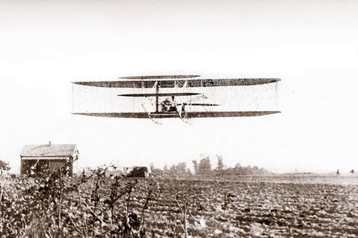 A Wright Biplane flies over the Kohn Plantation in Montgomery,
location of the Wright Brothers short-lived flying school.
(Alabama Department of Archives and History)
A Wright Biplane flies over the Kohn Plantation in Montgomery,
location of the Wright Brothers short-lived flying school.
(Alabama Department of Archives and History)
Dreams of Flying Machines
by Billy J. Singleton
Although several different states claim the honor of being the first to experience American aviation, Alabama has its own legacy of flight, and even the fabled Wright brothers established a flight school in the state. Orville Wright took several flights in Alabama, and other influential innovators of flight in Alabama include physician Andrew Denny, Lewis Archer Boswell, and John Ellis Fowler.
About the Author
Billy J. Singleton has been associated with the aviation industry for more than four decades. After retiring as a pilot for a major airline, he continues to fly as a corporate pilot based in Birmingham. A native of Alabama, he received a bachelor’s degree from Troy University and a Master of Aeronautical Science degree from Embry-Riddle Aeronautical University. Singleton has served as chair of the board
of directors of the Alabama Aviation Hall of Fame and the Southern Museum of Flight. He is the author of four books, has published numerous articles relating to aviation history and safety, and is a regular contributor of local history articles for the Clanton Advertiser. A resident of Clanton in Chilton County, he is a member of the Alabama Historical Association and serves on the board of directors of the Friends of the Alabama Department of Archives and History.
For Additional Information
Mobile Aviation by Billy Singleton (Arcadia Publishing, 2011) https://www.amazon.com/Mobile-Aviation-Images-Billy-Singleton-ebook/dp/B0099YH81C
“Early Aviation Experiments in Alabama” http://www.encyclopediaofalabama.org/article/h-3752
Southern Museum of Flight http://www.southernmuseumofflight.org/
by Billy J. Singleton
Although several different states claim the honor of being the first to experience American aviation, Alabama has its own legacy of flight, and even the fabled Wright brothers established a flight school in the state. Orville Wright took several flights in Alabama, and other influential innovators of flight in Alabama include physician Andrew Denny, Lewis Archer Boswell, and John Ellis Fowler.
About the Author
Billy J. Singleton has been associated with the aviation industry for more than four decades. After retiring as a pilot for a major airline, he continues to fly as a corporate pilot based in Birmingham. A native of Alabama, he received a bachelor’s degree from Troy University and a Master of Aeronautical Science degree from Embry-Riddle Aeronautical University. Singleton has served as chair of the board
of directors of the Alabama Aviation Hall of Fame and the Southern Museum of Flight. He is the author of four books, has published numerous articles relating to aviation history and safety, and is a regular contributor of local history articles for the Clanton Advertiser. A resident of Clanton in Chilton County, he is a member of the Alabama Historical Association and serves on the board of directors of the Friends of the Alabama Department of Archives and History.
For Additional Information
Mobile Aviation by Billy Singleton (Arcadia Publishing, 2011) https://www.amazon.com/Mobile-Aviation-Images-Billy-Singleton-ebook/dp/B0099YH81C
“Early Aviation Experiments in Alabama” http://www.encyclopediaofalabama.org/article/h-3752
Southern Museum of Flight http://www.southernmuseumofflight.org/
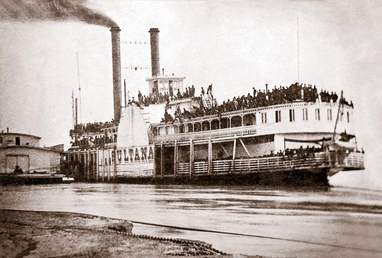 The final
photograph of the Sultana, taken at Helena, Arkansas, the day
before the disaster. (Wikimedia Commons)
The final
photograph of the Sultana, taken at Helena, Arkansas, the day
before the disaster. (Wikimedia Commons)
America's Forgotten Tragedy
The Loss of the Sultana
by Jerry O. Potter
As the Civil War neared its end, many POWs felt great relief, certain that they would soon be reunited with their families at home. However, for several thousand men, a fate worse than imprisonment awaited. When mercenary steamboat operators on the Sultana, eager to earn as much as possible on the last transports of POWs, overloaded their vessel beyond its capacity, disaster awaited. Jerry Potter explores the events leading to the Sultana disaster and the enormous casualties suffered.
About the Author
Jerry O. Potter is a practicing lawyer in Memphis, Tennessee. He graduated in 1973 with high honors from the University of Tennessee at Martin with a degree in history. After graduation, he was awarded an internship with TVA to do historical research and published a study on the history of northwest Tennessee. In 1975 he obtained his law degree from the University of Memphis School of Law. He is a fellow of the American College of Trial Lawyers. He has written three historical articles and one book, The Sultana Tragedy. He lives with his wife in Fayette County, Tennessee.
Additional Information
The Sultana Disaster Museum website: http://www.sultanadisastermuseum.org/
The Civil War Trust article on the event: https://www.civilwar.org/learn/articles/sultana-disaster
The Loss of the Sultana
by Jerry O. Potter
As the Civil War neared its end, many POWs felt great relief, certain that they would soon be reunited with their families at home. However, for several thousand men, a fate worse than imprisonment awaited. When mercenary steamboat operators on the Sultana, eager to earn as much as possible on the last transports of POWs, overloaded their vessel beyond its capacity, disaster awaited. Jerry Potter explores the events leading to the Sultana disaster and the enormous casualties suffered.
About the Author
Jerry O. Potter is a practicing lawyer in Memphis, Tennessee. He graduated in 1973 with high honors from the University of Tennessee at Martin with a degree in history. After graduation, he was awarded an internship with TVA to do historical research and published a study on the history of northwest Tennessee. In 1975 he obtained his law degree from the University of Memphis School of Law. He is a fellow of the American College of Trial Lawyers. He has written three historical articles and one book, The Sultana Tragedy. He lives with his wife in Fayette County, Tennessee.
Additional Information
The Sultana Disaster Museum website: http://www.sultanadisastermuseum.org/
The Civil War Trust article on the event: https://www.civilwar.org/learn/articles/sultana-disaster
DEPARTMENT ABSTRACTS
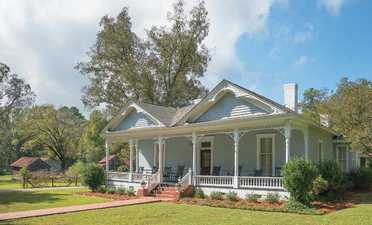 The McCulloh House was built in 1870 and embellished c. 1900
with gables and decorative wood trim. Inside, the original shiplap walls
and 24” baseboards accent the spacious central hall and adjoining
rooms. (Robin McDonald)
The McCulloh House was built in 1870 and embellished c. 1900
with gables and decorative wood trim. Inside, the original shiplap walls
and 24” baseboards accent the spacious central hall and adjoining
rooms. (Robin McDonald)
Southern Architecture and Preservation
Lee County’s McCulloh House
By Nathan L. Smock
Editor’s Note: Following the Civil War, Alabama’s agricultural landscape was one of both change and continuity—socially, economically, technologically, and architecturally. Old ways lingered even as an expanding railway network connected formerly isolated communities. In the process, some antebellum farms and plantations morphed into thriving centers of rural enterprise. McCulloh House and its complex of related buildings, which even included its own depot, reminds us of this little-known aspect of bygone life in rural Alabama.
Nathan Smock recounts the McCulloh House’s history and its recent renovations by descendants of its early inhabitants.
About the Author
Nathan L. Smock holds BM and BS degrees from the University of Alabama and is a native of Beulah. Robert Gamble, retired senior architectural historian for the Alabama Historical Commission, is the standing editor of the “Southern Architecture and Preservation” department of Alabama Heritage.
Lee County’s McCulloh House
By Nathan L. Smock
Editor’s Note: Following the Civil War, Alabama’s agricultural landscape was one of both change and continuity—socially, economically, technologically, and architecturally. Old ways lingered even as an expanding railway network connected formerly isolated communities. In the process, some antebellum farms and plantations morphed into thriving centers of rural enterprise. McCulloh House and its complex of related buildings, which even included its own depot, reminds us of this little-known aspect of bygone life in rural Alabama.
Nathan Smock recounts the McCulloh House’s history and its recent renovations by descendants of its early inhabitants.
About the Author
Nathan L. Smock holds BM and BS degrees from the University of Alabama and is a native of Beulah. Robert Gamble, retired senior architectural historian for the Alabama Historical Commission, is the standing editor of the “Southern Architecture and Preservation” department of Alabama Heritage.

Alabama 200
By Jay Lamar
In this second year of Alabama’s Bicentennial Commemoration, themed around “honoring our people,” Jay Lamar shares the story of Julia Lide, an Alabamian whose nursing service in World War I earned her honor and distinction.
About the Author
Jay Lamar is the Executive Director of the Alabama Bicentennial Commission.
For Additional Information
Transcript of Julia Lide biography http://digital.archives.alabama.gov/cdm/ref/collection/voices/id/2210
Alabama Nurses in WWI http://www.worldwar1centennial.org/2283
By Jay Lamar
In this second year of Alabama’s Bicentennial Commemoration, themed around “honoring our people,” Jay Lamar shares the story of Julia Lide, an Alabamian whose nursing service in World War I earned her honor and distinction.
About the Author
Jay Lamar is the Executive Director of the Alabama Bicentennial Commission.
For Additional Information
Transcript of Julia Lide biography http://digital.archives.alabama.gov/cdm/ref/collection/voices/id/2210
Alabama Nurses in WWI http://www.worldwar1centennial.org/2283
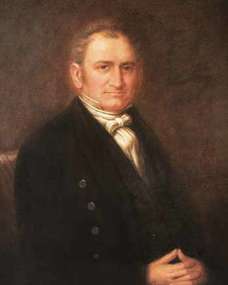 Indian agent John Crowell represented the new Alabama Territory in
Washington. (Alabama Department of Archives and History)
Indian agent John Crowell represented the new Alabama Territory in
Washington. (Alabama Department of Archives and History)
The Alabama Territory
Quarter by Quarter: Winter 1817
By Mike Bunn
As the Alabama Territory inched into its brief lifetime, it raced to establish the necessary components of a governmental entity. After creating a capital at St. Stephens, the Alabama Territory’s leaders built a government, charted a school and bank, and established territorial counties. At the same time that they moved forward in their work, however, Alabama’s Native Americans surely watched warily, as each step the territorial government took threatened to disenfranchise Alabama’s earliest inhabitants.
About the Author
Mike Bunn currently serves as director of Historic Blakeley State Park in Spanish Fort, Alabama. This department of Alabama Heritage magazine is sponsored by the Alabama Bicentennial Commission and the Alabama Tourism Department.
For Additional Information
Encyclopedia of Alabama article on the Alabama Territory and Early Statehood: http://www.encyclopediaofalabama.org/article/h-1548
Quarter by Quarter: Winter 1817
By Mike Bunn
As the Alabama Territory inched into its brief lifetime, it raced to establish the necessary components of a governmental entity. After creating a capital at St. Stephens, the Alabama Territory’s leaders built a government, charted a school and bank, and established territorial counties. At the same time that they moved forward in their work, however, Alabama’s Native Americans surely watched warily, as each step the territorial government took threatened to disenfranchise Alabama’s earliest inhabitants.
About the Author
Mike Bunn currently serves as director of Historic Blakeley State Park in Spanish Fort, Alabama. This department of Alabama Heritage magazine is sponsored by the Alabama Bicentennial Commission and the Alabama Tourism Department.
For Additional Information
Encyclopedia of Alabama article on the Alabama Territory and Early Statehood: http://www.encyclopediaofalabama.org/article/h-1548
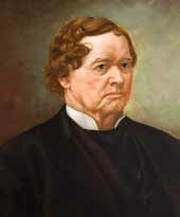 Gov. Reuben Chapman.
(Alabama Department
of Archives and History)
Gov. Reuben Chapman.
(Alabama Department
of Archives and History)
Alabama Governors
Reuben Chapman (1847-1849)
By Samuel L. Webb
As Alabama’s eighteenth governor, Reuben Chapman distinguished himself perhaps more negatively than positively. Although he took stands on issues such as state banks, private banks, and railroads, the event that perhaps most marked his term was his nomination of two southern Alabamians to the US Senate, violating an unspoken rule that nominees should originate from different regions of the state.
About the Author
Samuel L. Webb holds a JD from the University of Alabama School of Law and a PhD in history from the University of Arkansas. This department is drawn from Alabama Governors: A Political History of the State, Second Edition, edited by Webb and Margaret E. Armbrester (University of Alabama Press, 2014).
For Additional Information
Reuben Chapman/Encyclopedia of Alabama Entry http://www.encyclopediaofalabama.org/article/h-1530
Reuben Chapman (1847-1849)
By Samuel L. Webb
As Alabama’s eighteenth governor, Reuben Chapman distinguished himself perhaps more negatively than positively. Although he took stands on issues such as state banks, private banks, and railroads, the event that perhaps most marked his term was his nomination of two southern Alabamians to the US Senate, violating an unspoken rule that nominees should originate from different regions of the state.
About the Author
Samuel L. Webb holds a JD from the University of Alabama School of Law and a PhD in history from the University of Arkansas. This department is drawn from Alabama Governors: A Political History of the State, Second Edition, edited by Webb and Margaret E. Armbrester (University of Alabama Press, 2014).
For Additional Information
Reuben Chapman/Encyclopedia of Alabama Entry http://www.encyclopediaofalabama.org/article/h-1530
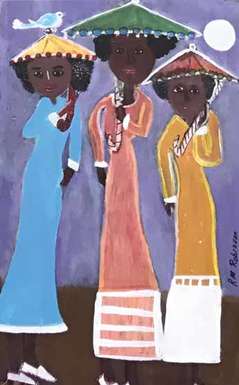
Alabama Makers
Preserving Alabama History Through Folk Art
By Almosa Pirela-Jones
Folk art has rich Alabama roots, and the work of Ruth Robinson adds even more depth to that tradition. Robinson, a Grand Bay native, creates evocative paintings on and incorporating found objects and highlighting the beauty and color of everyday life.
About the Author
Almosa Pirela-Jones is a senior at the University of Alabama, where she is pursuing a bachelor of arts in English with double minors in African American studies and creative writing. Alfa Insurance, sponsor of the “Alabama Makers” department in Alabama Heritage, is a Montgomery-based company committed to providing its family of customers with all of its life, auto, home, farm, and business insurance needs.
For Additional Information
Ruth’s Porch Art http://www.rmrporchart.com/
Kentuck Art Center http://www.kentuck.org/
Preserving Alabama History Through Folk Art
By Almosa Pirela-Jones
Folk art has rich Alabama roots, and the work of Ruth Robinson adds even more depth to that tradition. Robinson, a Grand Bay native, creates evocative paintings on and incorporating found objects and highlighting the beauty and color of everyday life.
About the Author
Almosa Pirela-Jones is a senior at the University of Alabama, where she is pursuing a bachelor of arts in English with double minors in African American studies and creative writing. Alfa Insurance, sponsor of the “Alabama Makers” department in Alabama Heritage, is a Montgomery-based company committed to providing its family of customers with all of its life, auto, home, farm, and business insurance needs.
For Additional Information
Ruth’s Porch Art http://www.rmrporchart.com/
Kentuck Art Center http://www.kentuck.org/
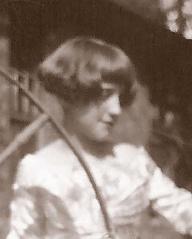 A visitor from Texas to relatives in
Madison County, Alabama, in 1924, young Margaret Bone, wearing
her grandmother’s dress, demonstrates her obvious skill with
a nineteenth-century spinning wheel. (Kennon Ledbetter)
A visitor from Texas to relatives in
Madison County, Alabama, in 1924, young Margaret Bone, wearing
her grandmother’s dress, demonstrates her obvious skill with
a nineteenth-century spinning wheel. (Kennon Ledbetter)
Behind the Image
Tale Spinning
By Frances Osborn Robb
Although photographers perhaps most appreciate the polished, perfect images, sometimes for those sleuths who hope to unpack a photo’s secrets, the best option is a less-pristine image. In this quarter’s installment, the editor explores the details of a particularly perplexing image, one in which the subject had dressed up in period clothing, further complicating the dating process.
About the Author
Frances Osborn Robb is the contributing editor for the “Behind the Image” department of Alabama Heritage magazine. She is the author of Shot in Alabama: A History of Photography, 1839–1941, and a List of Photographers (University of Alabama Press, 2017). She is passionate about historic photographs.
For Additional Information
Shot in Alabama: A History of Photography, 1839 – 1941, and a List of Photographers by Frances O. Robb (University of Alabama Press, 2017) http://www.uapress.ua.edu/product/Shot-in-Alabama,6501.asp
Tale Spinning
By Frances Osborn Robb
Although photographers perhaps most appreciate the polished, perfect images, sometimes for those sleuths who hope to unpack a photo’s secrets, the best option is a less-pristine image. In this quarter’s installment, the editor explores the details of a particularly perplexing image, one in which the subject had dressed up in period clothing, further complicating the dating process.
About the Author
Frances Osborn Robb is the contributing editor for the “Behind the Image” department of Alabama Heritage magazine. She is the author of Shot in Alabama: A History of Photography, 1839–1941, and a List of Photographers (University of Alabama Press, 2017). She is passionate about historic photographs.
For Additional Information
Shot in Alabama: A History of Photography, 1839 – 1941, and a List of Photographers by Frances O. Robb (University of Alabama Press, 2017) http://www.uapress.ua.edu/product/Shot-in-Alabama,6501.asp
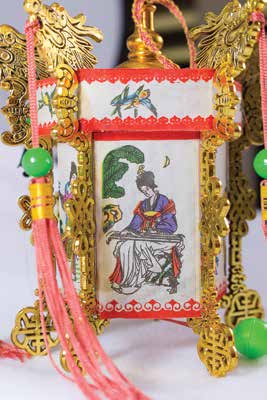 Items from the Cork collection include a Chinese palace lantern. (Alabama Department of Archives and History)
Items from the Cork collection include a Chinese palace lantern. (Alabama Department of Archives and History)
From the Archives
Cultural Crossroads in the Capital
By Raven Christopher
Thanks to a recent gift from Delores Cork, who worked for decades in English Language education for non-native speakers, the Alabama Department of Archives and History has a new collection of artifacts. Cork’s collection consists of numerous tokens and gifts she received from her grateful students, and taken together, those gifts offer an insightful glimpse of the many cultural influences on Alabama life.
About the Author
Raven Christopher is the museum collections coordinator at the Alabama Department of Archives and History.
For Additional Information
Museum of Alabama http://www.museum.alabama.gov/
Cultural Crossroads in the Capital
By Raven Christopher
Thanks to a recent gift from Delores Cork, who worked for decades in English Language education for non-native speakers, the Alabama Department of Archives and History has a new collection of artifacts. Cork’s collection consists of numerous tokens and gifts she received from her grateful students, and taken together, those gifts offer an insightful glimpse of the many cultural influences on Alabama life.
About the Author
Raven Christopher is the museum collections coordinator at the Alabama Department of Archives and History.
For Additional Information
Museum of Alabama http://www.museum.alabama.gov/
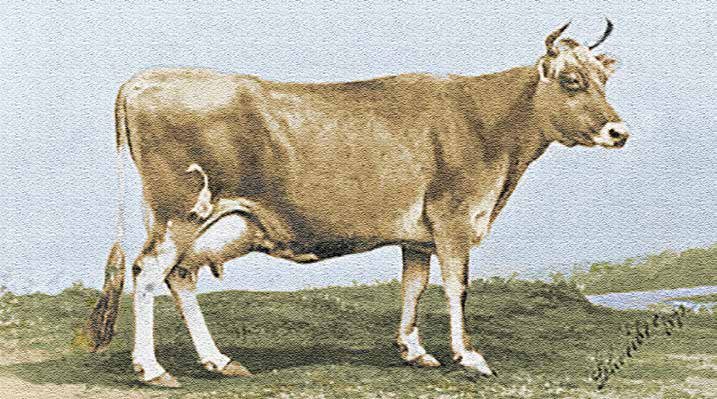 The story of Lily Flagg is one of myths and misconceptions. (Wikimedia Commons)
The story of Lily Flagg is one of myths and misconceptions. (Wikimedia Commons)
Portraits & Landscapes
Huntsville's Lily Flagg
By Whitney A. Snow
At the end of the twentieth century, one of Hunstville’s most famous residents was none other than Lily Flagg, a Jersey cow with a prolific record of milk production. As she went to the World’s Fair to demonstrate her abilities, all of Huntsville stood behind her. And though Lily Flagg’s trip to Chicago did not go precisely as planned, her Alabama home continues to honor her memory.
About the Author
Whitney A. Snow is an assistant professor of history at Midwestern State University in Wichita Falls, Texas. She is the author of the books Cathedral Caverns (Arcadia, 2017) and Lake Guntersville (Arcadia, forthcoming, 2018).
For Additional Information
Lily Flagg article in The Huntsville Historical Review http://huntsvillehistorycollection.org/hh/hhpics/pdf/hhr/Volume_41_1_Spring-Summer-16.pdf
Lily Flagg Milk Stout from Straight to Ale http://straighttoale.com/lily-flagg-milk-stout
Huntsville's Lily Flagg
By Whitney A. Snow
At the end of the twentieth century, one of Hunstville’s most famous residents was none other than Lily Flagg, a Jersey cow with a prolific record of milk production. As she went to the World’s Fair to demonstrate her abilities, all of Huntsville stood behind her. And though Lily Flagg’s trip to Chicago did not go precisely as planned, her Alabama home continues to honor her memory.
About the Author
Whitney A. Snow is an assistant professor of history at Midwestern State University in Wichita Falls, Texas. She is the author of the books Cathedral Caverns (Arcadia, 2017) and Lake Guntersville (Arcadia, forthcoming, 2018).
For Additional Information
Lily Flagg article in The Huntsville Historical Review http://huntsvillehistorycollection.org/hh/hhpics/pdf/hhr/Volume_41_1_Spring-Summer-16.pdf
Lily Flagg Milk Stout from Straight to Ale http://straighttoale.com/lily-flagg-milk-stout
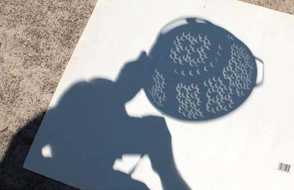 Partial eclipse filtered through a colander, darkly. (Judi Aucoin)
Partial eclipse filtered through a colander, darkly. (Judi Aucoin)
Nature Journal
Cosmic Connections, Partially Eclipsed
By L.J. Davenport
As last summer’s eclipse shaded the nation, millions of Americans watched. Among them was none other than Alabama Heritage’s resident biologist, Larry Davenport, whose unique perspective on the events include scientific expertise, literary references, and linguistic lessons.
About the Author
Larry Davenport is Paul N. Propst Professor of Natural Sciences at Samford University and co-author (with Ken Wills) of Exploring Wild Alabama (University of Alabama Press, 2016).
For Additional Information
L.J. Davenport’s book, Exploring Wild Alabama, is available for purchase at http://www.uapress.ua.edu/product/Exploring-Wild-Alabama,6429.aspx
Cosmic Connections, Partially Eclipsed
By L.J. Davenport
As last summer’s eclipse shaded the nation, millions of Americans watched. Among them was none other than Alabama Heritage’s resident biologist, Larry Davenport, whose unique perspective on the events include scientific expertise, literary references, and linguistic lessons.
About the Author
Larry Davenport is Paul N. Propst Professor of Natural Sciences at Samford University and co-author (with Ken Wills) of Exploring Wild Alabama (University of Alabama Press, 2016).
For Additional Information
L.J. Davenport’s book, Exploring Wild Alabama, is available for purchase at http://www.uapress.ua.edu/product/Exploring-Wild-Alabama,6429.aspx
Reading the Southern Past
Tale of Two Cities
By Stephen Goldfarb
This quarter’s installment of “Reading the Southern Past” explores two texts on the civil rights movement, Where Peachtree Meets Sweet Auburn: The Saga of Two Families and the Making of Atlanta (Scribner, 1996) by Gary M. Pomerantz and Carry Me Home: Birmingham, Alabama: The Climactic Battle of the Civil Rights Revolution (Simon & Schuster, 2001) by Diane McWhorter. Each text looks at a particular city, and reading both books offers insight on two different paths southern towns took through the Civil Rights era—and the lasting repercussions of each path.
About the Author
Stephen Goldfarb holds a PhD in the history of science and technology. He retired from a public library in 2003.
For Additional Information
Where Peachtree Meets Sweet Auburn: The Saga of Two Families and the Making of Atlanta https://www.amazon.com/Where-Peachtree-Meets-Sweet-Auburn/dp/0140265090
Carry Me Home: Birmingham, Alabama: The Climactic Battle of the Civil Rights Revolution https://www.amazon.com/Carry-Home-Birmingham-Climactic-Revolution/dp/1476709513
Tale of Two Cities
By Stephen Goldfarb
This quarter’s installment of “Reading the Southern Past” explores two texts on the civil rights movement, Where Peachtree Meets Sweet Auburn: The Saga of Two Families and the Making of Atlanta (Scribner, 1996) by Gary M. Pomerantz and Carry Me Home: Birmingham, Alabama: The Climactic Battle of the Civil Rights Revolution (Simon & Schuster, 2001) by Diane McWhorter. Each text looks at a particular city, and reading both books offers insight on two different paths southern towns took through the Civil Rights era—and the lasting repercussions of each path.
About the Author
Stephen Goldfarb holds a PhD in the history of science and technology. He retired from a public library in 2003.
For Additional Information
Where Peachtree Meets Sweet Auburn: The Saga of Two Families and the Making of Atlanta https://www.amazon.com/Where-Peachtree-Meets-Sweet-Auburn/dp/0140265090
Carry Me Home: Birmingham, Alabama: The Climactic Battle of the Civil Rights Revolution https://www.amazon.com/Carry-Home-Birmingham-Climactic-Revolution/dp/1476709513
